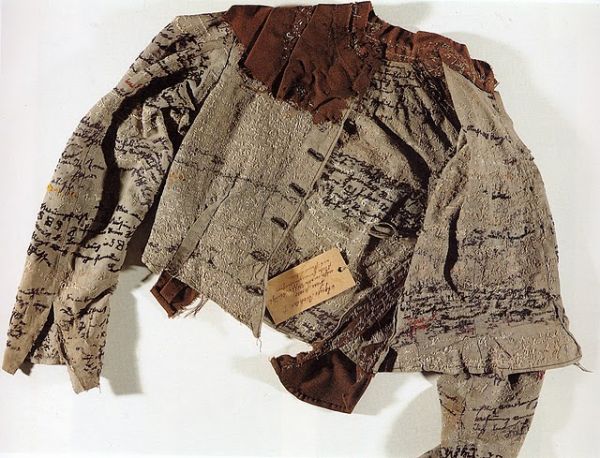For two people walking into a Turkish minefield, they looked awfully assured.The
pair strode in from Syria on a recent afternoon, following a faint
track across the grassy plain. They slipped into Turkey through a fence
near a vacant military watchtower and vanished into an olive grove.
Such
hazardous crossings are a smuggler's tradition at the border, where
Turkish plans to clear a vast belt of land mines have been clouded by
Syria's civil war. Last week, Turkey asked NATO allies to deploy Patriot
missiles as a defense against any aerial attacks from Syria after
shells and bullets spilled across the border, killing and injuring some
Turks.
Starting in the 1950s, Turkish forces planted more than
600,000 U.S.-made "toe poppers" — mines designed to maim, not kill — and
other land mines along much of its 900-kilometer (560-mile) border with
Syria, which runs from the Mediterranean Sea to Iraq. The aim was to
stop smugglers whose cheap black market goods undercut the Turkish
economy and later to thwart Kurdish rebels from infiltrating Turkey's
southeast.
However, the mines also killed and maimed civilians,
took arable land from Turkish farmers and are now considered by many as a
crude method of policing.
Turkey says it plans to clear
anti-personnel mines on the Syria border by 2016, missing a March 2014
deadline required by the international Mine Ban Treaty. The
International Campaign to Ban Landmines, a Geneva-based group that won
the 1997 Nobel Peace Prize, has criticized Turkey for its slow progress.
The
European Union has committed €40 million ($52 million) to demining and
surveillance equipment near Turkey's borders with Iran and Armenia on
the basis that Turkey could eventually become the EU's most eastern
border. Turkey, adjacent to the Middle East and Central Asia, has long
been a drug trafficking route and a transit point for migrants who enter
Europe illegally.
Since last year, nearly 200,000 Syrian refugees
have crossed into Turkey, mostly through border posts or areas known to
be free of mines. A Syrian man and two children were reported killed in
August, however, by an explosive in an area of Mardin province that had
been mined by the Turkish military. Syrian forces last year were also
suspected of laying some mines to stem an embarrassing refugee flight
into Turkey.
A Turkish smuggler in the border village of Akinci,
south of the city of Gaziantep, said he has charged Syrian refugees up
to 25 Turkish lira ($14) each to lead them through Turkish minefields.
He has also acted as a lookout, monitoring shifts of Turkish military
sentries and telling another smuggler who escorts Syrian clients,
usually before dawn.
"I don't know where they are going. I don't
care," said the gaunt man, who would not give his name and claimed he
was desperate for cash. "I know it's risky for me, but I have to do it."
According
to lore, villagers used to enter the Akinci mosque, which lies beside a
minefield, for prayers and then sneak out the back into Syria for
business.
On foot, mule or motorcycle, smugglers traditionally
brought in items from Syria, including tea, gasoline, cigarettes,
electronics and livestock, to sell for a profit in Turkey. The Syrian
war has disrupted but not extinguished the trade among communities that
were abruptly divided when the border was drawn in the last century.
Some
smugglers try their luck at border posts, which became easier to cross
when visa requirements were removed in 2009 after the warming of ties
between Turkey and Syrian President Bashar Assad, now an enemy because
of his attacks on the Syrian opposition. A few weeks ago, a Syrian man
was detained while trying to enter Turkey with gold bars in his
waistband.
Approved traffic moves the other way, as Turkey and
other nations that oppose Assad send logistical and humanitarian aid to
Syrian rebels and civilians. While Turkey says it is not arming the
insurgency, Syrian rebels have told The Associated Press they receive
some weapons and ammunition from the Turkish side with only sporadic
interference from border patrols. According to rebels, these weapons are
bought with funding from rich Syrians or sympathetic Gulf Arabs.
Fences are down and cars can cross in some parts adjoining Syria's Idlib province, an opposition stronghold.
The
first mines on the Syrian border were planted after smugglers killed
two customs agents in 1956. Turkey laid more mines in the 1980s and
1990s, at the height of its war with the rebel Kurdistan Workers' Party,
or PKK, which was backed by Syria. Turkey is again worried about
possible infiltration by Kurdish rebels who are cheered by an autonomy
grab by their ethnic brethren in Syria.
The Turkish defense
ministry told the AP it started evaluating bids from demining companies
in July and would sign contracts once the assessment is complete.
"Developments
in Syria to this day have not affected our plans or work," the ministry
said. NATO said it is assisting with "technical preparations" for the
mine clearance.
Cenk Sidar, managing director of Sidar Global
Advisors, a Washington-based consultancy, said he believed that Turkey
would sign contracts but wait until the Syrian civil war is resolved.
"According
to plans, the government will build electronic border surveillance
systems simultaneously with the demining. Even this seems too risky at
this point," Sidar wrote in an email. "It may take a few years, and some
qualified/selected firms may change their pricing or conditions due to
the increasing instability."
Between 2010 and 2011, a Turkish
firm, Nokta, and a partner from Azerbaijan cleared more than 1,200 mines
around an archaeological site, Karkemish, on the Syrian border. They
found anti-tank mines and M14 mines known as "toe poppers." It was hard
to work with metal detectors because the soil also contained remnants of
coins and other ancient fragments; some mines had to be dug out by hand
rather than detonated to avoid damaging cultural treasures.
There
is no reliable data for casualties from mines laid by the Turkish
military, whose fight with the PKK has claimed tens of thousands of
lives. The rebels, who regularly target security forces with mines and
roadside bombs, took up arms in 1984 in the name of Kurdish rights;
Turkey and the West label them terrorists.
Residents around Akinci
recalled a villager who lost a limb to a mine several years ago while
cutting trees for military sentries. Halil Kaya, 64, said he had heard
of several dozen people over the decades who were killed or injured by
mines. A deep furrow runs down Kaya's right forearm from a Turkish
military bullet in his days as a smuggler.
Mehmet Dagdeviren, 49,
said the Turkish military had softened and now might only fire warning
shots at smugglers. He interrupted the chat to take a phone call, then
rushed to a car and drove away.
A delivery from Syria needed collection.

















 During
the 1890s, a German woman named Agnes Richter was institutionalized for
a mental illness. She wasn't allowed to use conventional writing
instruments, but she was allowed to sew. Richter was a good seamstress,
so she embroidered hundreds of mysterious words and phrases on a
straightjacket. Gail Hornstein, a psychologist, wrote a book about her
exploration of this unique artifact and what it reveals about Richter's
mind.
During
the 1890s, a German woman named Agnes Richter was institutionalized for
a mental illness. She wasn't allowed to use conventional writing
instruments, but she was allowed to sew. Richter was a good seamstress,
so she embroidered hundreds of mysterious words and phrases on a
straightjacket. Gail Hornstein, a psychologist, wrote a book about her
exploration of this unique artifact and what it reveals about Richter's
mind.










 English
Heritage has some tips for celebrating Christmas in the Tudor and
Victorian styles, if you want to be more traditional than everyone
around you. For example, a Tudor-style Christmas would start with
putting one person in charge of Christmas and all its parties.
English
Heritage has some tips for celebrating Christmas in the Tudor and
Victorian styles, if you want to be more traditional than everyone
around you. For example, a Tudor-style Christmas would start with
putting one person in charge of Christmas and all its parties.
 That didn't take long.
That didn't take long.




